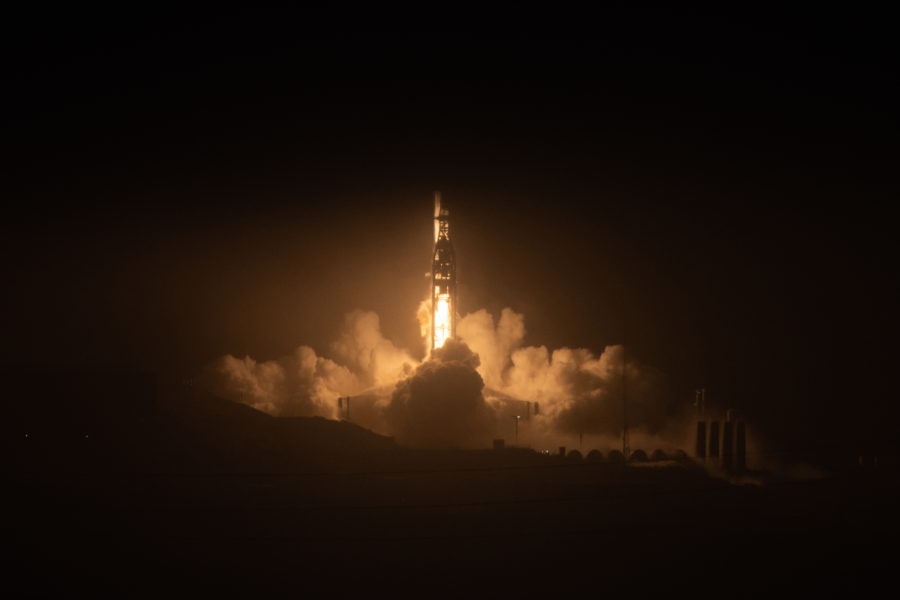The Department of the Air Force’s biggest acquisition accounts generally kept costs down in fiscal 2021 compared to the year before, even as the programs’ projected timelines continued to lengthen, a new DAF report found.
The department’s annual acquisition report, released Oct. 14, showed how current and future estimated costs and schedules for major programs have changed from both original projections and more recent estimates. In particular, the report showed significant cost savings in the National Security Space Launch and GPS III Follow-on programs while not cutting quantities. NSSL cut its long-term estimate for the program by $1.6 billion, 29 percent below its original baseline; while GPS IIIF saw a decrease of $612 million, roughly 9 percent less than its estimate in last year’s acquisition report.
“These two programs were more than enough to offset other program cost increases,” the report states, noting that the DAF’s overall portfolio of DOD Acquisition Category I, or ACAT I, programs—each of which involve at least $480 million in research, development, testing, and evaluation or $2.79 billion in procurement—decreased costs about $920 million, or 0.3 percent.
Of 35 ACAT I programs, 11 increased their estimates over their original baselines.
Leading the way, the F-15 Eagle Passive Active Warning Survivability System, or EPAWSS, remained significantly over cost and behind its original schedule, though the schedule baseline was recently reset.
Compared to its original baselines, EPAWSS—an electronic warfare system designed to significantly upgrade the fourth-generation fighter’s capabilities—is 24 percent over budget by unit cost. That marks a nearly six percent increase over the prior cost estimate.
For schedule, last year’s acquisition report recorded EPAWSS as being 33 months behind. That baseline was reset in fiscal 2021.
EPAWSS’s acquisition troubles have been documented before—the program was originally to cover all F-15Cs and F-15Es, but the Air Force cut the F-15C from the planned upgrade in 2017. The program was also on hold for several years as the Air Force wrestled with how long to keep the F-15.
That has led to major program cost and schedule fluctuations—as have shifting requirements for the program, changing its scope.
Eventually, the Air Force split some decision points for the program, hoping for fewer reviews looking at more manageable chunks. The program reached Low-Rate Initial-Production phase in December 2020, and the first units were installed on operational fighters in September 2022. The acquisition report estimates that the program will complete its Engineering and Manufacturing Development phase in fiscal 2024.
The service won’t say much about the capabilities of EPAWSS, but the system will likely give F-15 pilots the means to detect, locate, and jam enemy radar while also deceiving the adversary about the fighter’s exact position and heading.
The only other ACAT I program now projected to cost more than 10 percent over its original baseline is the Intercontinental Ballistic Missile Fuze Modernization program, which actually cut its cost estimate from 2020 to 2021, from 16 percent growth to 15 percent.
The only program that saw its cost increase by more than 10 percent from last year was the Military GPS User Equipment (MGUE) program, which actually went from being under cost a year ago to six percent over cost as of September 2021. The program also rebaselined its schedule in 2021.
A number of other programs also reset their current schedule baselines, as their timelines continue to slip from original estimates.
“The aggregate schedule grew by 2.2 percent in FY21, which is a bit better than the 3 percent average rate of growth over the last five years,” the report states. “Scheduled growth in FY21 was driven primarily by nine programs experiencing schedule growth. … No programs shortened their overall schedule length.”
One of the primary drivers of that schedule growth was the VC-25B, the planned replacement for the Air Force One aircraft. The program has been plagued by delays for some time now, with the most recent estimates being that aircraft will not be delivered until September 2026 at least, a delay of two years.
All in all, however, DAF Assistant Secretary for Acquisition, Technology, and Logistics Andrew Hunter framed the 2021 report as showing a “tremendous” year for the Air Force acquisition enterprise.
“This report provides data showing we are executing and meeting requirements, while increasing our focus on meeting the pacing challenges and persistent and acute threats,” Hunter said in a statement.
